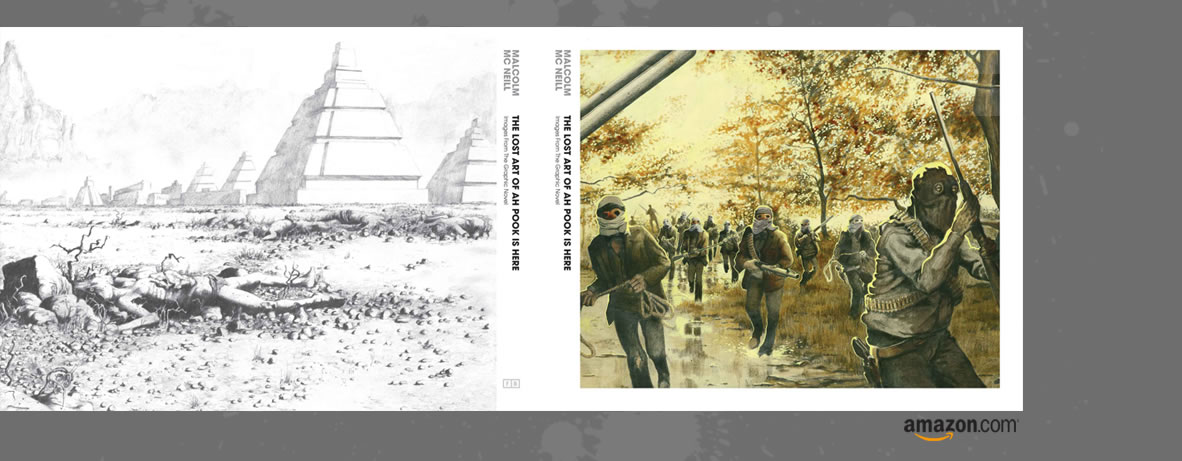
THE LOST ART OF AH POOK IS HERE: IMAGES FROM THE GRAPHIC NOVEL
Ah Pook Is Here was a "Word-Image" collaboration between author WILLIAM S. BURROUGHS and artist MALCOLM MC NEILL that began in 1970 when Mc Neill was in his final year of art school. There was no market for such a book at that time and after seven years of work it was abandoned. The images were placed in storage, where they remained for twenty-five years.
Ah Pook was prescient both in its narrative content and form. It anticipated the controlling methods of the current Western political ideology and the intersection of the Mayan and Judeo-Christian temporal worldviews implicit in the events of "2012". It also proposed apocalypse as the inevitable outcome. As a visual narrative in book form it prefigured the Graphic Novel.
In 1979 the text of Ah Pook Is Here was published alone in the hope of attracting a publisher for the combined text-image version. When it became clear that no publisher would commit to the idea, the project ended and the collaboration of Ah Pook Is Here essentially disappeared. It would be thirty years before the unlikeliest of circumstances would revive it and a publisher would be found.
Even though Ah Pook had not been completed, FANTAGRAPHICS proposed a book showing the way the collaboration had worked and what it had tried to achieve. Burroughs' text and Mc Neill's images would finally be reconciled in the form in which they had been conceived. Regrettably the idea would not be realized. The Burroughs Estate would not allow the use of the text and Word and Image would remain separated. This time it was the words that were lost, but given the timeliness of the subject, and in acknowledgement of its role as seminal graphic novel, Fantagraphics decided to publish the images alone.
The Lost Art of Ah Pook Is Here now conveys a larger narrative. The images become the record of the collaboration itself, the difficulties it encountered and the very different ideas it set out to explore. In his summary Mc Neill describes the unique subtext that motivated the relationship and how Burroughs' unusual view of the creative process added a deeper sense of purpose to the project. As a book, the idea was a failure, but as a literary experiment it was remarkably successful. Word and Image between them would produce extraordinary evidence to support Burroughs' underlying perspective and as Mc Neill demonstrates, their ultimate separation is in fact but another affirmation of what the interaction really set out to prove.
SARA J. VAN NESS (Watchmen as Literature: A Critical Study of the Graphic Novel) contributes an historical evaluation of the project and considers the practical and creative issues confronting a book of that kind at the time it was conceived. She examines the concept of "genre" as an obstacle to the way the book was perceived and the nature of authorship in the context of Word-Image collaboration.
The Lost Art is an archive of all the work produced for Ah Pook Is Here including preliminary sketches, complete and incomplete pages, notes and correspondence and images for other Burroughs's texts that Mc Neill created during that time.



